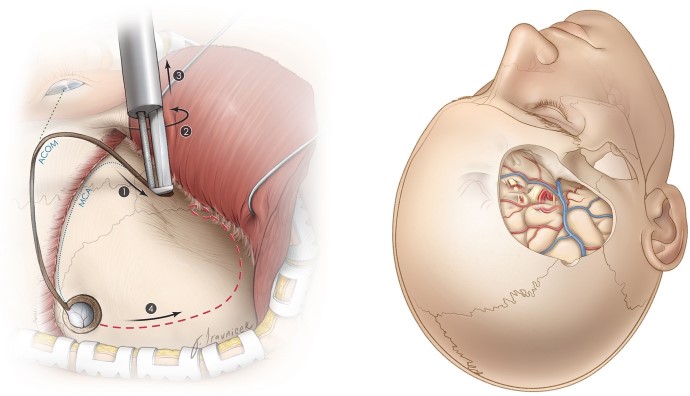Assessment of the Patient Undergoing Intracranial Surgery would include:
Careful, frequent monitoring of respiratory function, including blood gases
Monitor for signs and symptoms of complications
Monitor fluid status and laboratory data
All of the above
The Correct Answer is D
Choice A: Careful, frequent monitoring of respiratory function, including blood gases is correct, as it can detect and prevent hypoxia, hypercapnia, and acid-base imbalance that can affect the brain and other organs.
Choice B: Monitor for signs and symptoms of complications is correct, as it can identify and treat potential problems such as hemorrhage, infection, seizures, or increased intracranial pressure.
Choice C: Monitor fluid status and laboratory data is correct, as it can maintain fluid and electrolyte balance and prevent dehydration, overhydration, or cerebral edema.
Choice D: All of the above is correct, as all of these assessments are important for the patient undergoing intracranial surgery.

Nursing Test Bank
Naxlex Comprehensive Predictor Exams
Related Questions
Correct Answer is B
Explanation
Choice A: When patient is fully oriented is incorrect because it is a positive sign of recovery from a concussion. It means that the patient is aware of their person, place, time, and situation. The nurse should monitor the patient's orientation status but does not need to report it to the doctor immediately.
Choice B: Difficulty in awakening, lethargy, dizziness, confusion, irritability, anxiety are correct because they are signs of worsening brain injury or complications from a concussion. They may indicate increased intracranial pressure, bleeding, swelling, or infection in the brain. The nurse should report these symptoms to the doctor immediately and prepare for further diagnostic tests or interventions.
Choice C: When patient is easy to arouse is incorrect because it is also a positive sign of recovery from a concussion. It means that the patient responds quickly and appropriately to verbal or physical stimuli. The nurse should monitor the patient's level of consciousness but does not need to report it to the doctor immediately.
Choice D: All of the above are incorrect because only choice b) requires immediate reporting to the doctor. Choices a) and c) are normal or expected outcomes of a concussion and do not indicate any danger or complication. The nurse should use clinical judgment and follow the guidelines for concussion management and care.
Correct Answer is A
Explanation
Choice A: Progressive weakness and atrophy of muscle is a manifestation of ALS, as it results from the loss of motor
neurons that control voluntary muscle movements²³.
Choice B: Cramps, twitching, and lack of coordination is a manifestation of ALS, as it results from the abnormal activity of motor neurons that are still functioning²³.
Choice C: Spasticity, deep tendon reflexes brisk, and overactive is a manifestation of ALS, as it results from the damage to the upper motor neurons that regulate muscle tone²³.
Choice D: Difficulty speaking, swallowing, breathing is a manifestation of ALS, as it results from the involvement of the muscles in the mouth, throat, and chest²³.
Choice E: All of the above is correct, as all of these manifestations are common in ALS.

Whether you are a student looking to ace your exams or a practicing nurse seeking to enhance your expertise , our nursing education contents will empower you with the confidence and competence to make a difference in the lives of patients and become a respected leader in the healthcare field.
Visit Naxlex, invest in your future and unlock endless possibilities with our unparalleled nursing education contents today
Report Wrong Answer on the Current Question
Do you disagree with the answer? If yes, what is your expected answer? Explain.
Kindly be descriptive with the issue you are facing.
